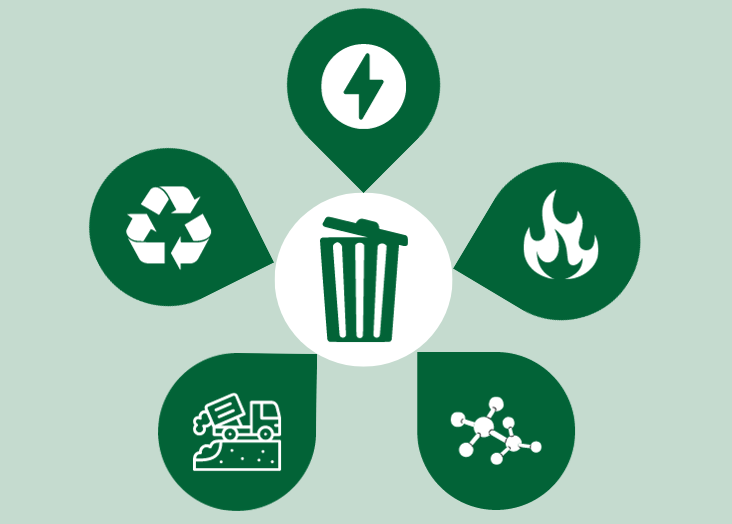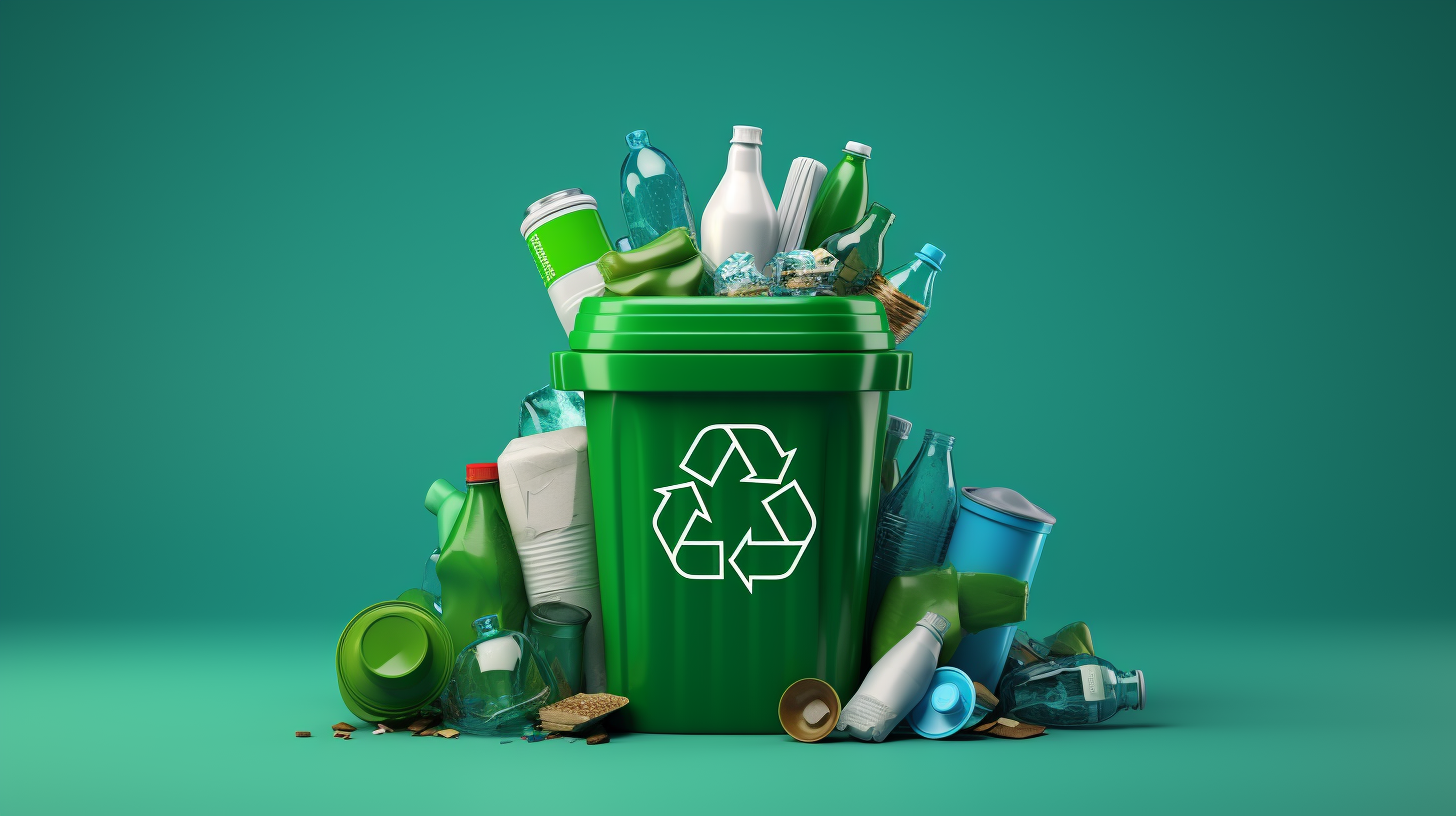Comprehending the Classification and Handling of Various Sorts Of Waste
Efficient waste administration is essential for environmental sustainability, needing an extensive understanding of the category and handling of different waste kinds. Family waste, industrial byproducts, hazardous products, electronic refuse, and natural residues each necessitate distinct protocols to ensure safety and security and lessen ecological damage. Applying correct partition, treatment, and disposal approaches is necessary to alleviate damaging environmental effects and promote source preservation. For instance, the composting of natural waste contrasts dramatically with the elaborate treatments needed to manage unsafe compounds. This complex method to throw away administration underscores its intricacy and the crucial requirement for specialized understanding in this domain.

Home Waste
Family waste, including a wide range of disposed of materials generated from daily living tasks, represents a considerable element of the overall waste stream - recycling lives services. This classification consists of natural waste such as food scraps, backyard cuttings, and paper products, along with inorganic products like plastics, steels, and glass. The varied nature of home waste demands efficient category and administration to mitigate ecological influence and advertise sustainable living practices
Reliable home waste management starts with partition at the resource, facilitating recycling, composting, and risk-free disposal. Organic waste, for example, can be composted to create nutrient-rich soil modifications, lowering landfill problem and enhancing dirt wellness. Recyclable materials, including paper, glass, and certain plastics, can be refined and repurposed, minimizing and saving sources energy consumption associated with brand-new product production.
Furthermore, unsafe house waste such as batteries, digital tools, and cleaning chemicals calls for specialized taking care of to avoid dirt and water contamination. Public understanding campaigns and convenient disposal options play crucial roles in making sure appropriate disposal and recycling of these materials. By implementing durable waste reduction approaches and promoting neighborhood engagement, districts can substantially alleviate the environmental footprint of family waste.
Industrial Waste
Industrial waste, a major factor to global waste generation, includes a diverse series of products generated by production, building and construction, and various other commercial activities. This group includes byproducts such as scrap steel, plastics, rubber, chemicals, and other residues. The make-up and quantity of hazardous waste can differ considerably relying on the industry and manufacturing processes involved. Reliable monitoring of hazardous waste is vital for decreasing ecological effect and promoting lasting techniques.
The handling of industrial waste commonly entails a number of procedures: collection, partition, treatment, and disposal. Collection systems are made to effectively gather waste products from numerous resources within a commercial procedure.
Adopting approaches such as waste minimization, resource healing, and recycling can dramatically lower the worry of hazardous waste on the atmosphere, contributing to even more sustainable commercial techniques.
Hazardous Waste

The category of harmful waste is commonly based upon its physical and chemical characteristics. Hazardous wastes consist of hazardous substances that can trigger adverse health effects also at reduced focus. Destructive wastes can damage or destroy living materials and cells. Flammable wastes can conveniently fire up, presenting fire dangers, while reactive wastes can create explosions or launch toxic gases upon contact with other materials.
Reliable dangerous waste administration includes a number of crucial techniques: recognition and segregation of harmful materials, secure transport and storage space, and suitable check this treatment and disposal. Therapy techniques may consist of chemical incineration, stabilization, and neutralization. Regulatory compliance is essential, guided by structures such as the Source Preservation and Recovery Act (RCRA) in the United States, which ensures secure and ecologically sound monitoring of contaminated materials.
Electronic Waste
Electronic waste, commonly abbreviated as e-waste, represents an expanding difficulty in waste management due to the rapid obsolescence of modern technology. This group incorporates a broad range of discarded electronic tools, including smart devices, computers, tvs, and house devices. The complexity of e-waste lies in its structure; these things have a blend of webpage valuable products such as gold and copper, along with unsafe compounds like cadmium, lead, and mercury.

Legislation and policies, such as the European Union's Waste Electronic and electrical Tools (WEEE) Directive, aim to promote responsible e-waste monitoring. These plans mandate producers to assist in the collection and recycling of digital items, thereby lowering the worry on land fills and minimizing environmental contamination.
Organic Waste
Organic waste, incorporating biodegradable products such as food scraps, yard trimmings, and farming deposits, makes up a considerable portion of the municipal solid waste stream. This sort of waste is noteworthy not discover this only for its quantity but also for its potential environmental impact otherwise handled properly. Organic waste can disintegrate anaerobically in landfills, generating methane, a potent greenhouse gas adding to climate adjustment.
Proper handling of natural waste includes several strategies. Composting is a widely embraced approach, changing organic materials into valuable compost that can improve soil and assistance sustainable agriculture. This procedure likewise reduces the quantity of waste sent to land fills. Another method is anaerobic food digestion, which breaks down raw material in the absence of oxygen, generating biogas that can be used as a renewable resource resource. In addition, drawing away food waste from garbage dumps with donation programs can minimize food insecurity while reducing waste.
Municipalities and businesses are progressively identifying the importance of organic waste administration. Carrying out thorough natural waste reusing programs not only reduces environmental impacts but likewise aligns with more comprehensive sustainability objectives, promoting a circular economic situation where sources are consistently reused and repurposed.
Conclusion
Effective waste management and environmental management demand a detailed understanding of the classification and handling of different waste types. House, commercial, hazardous, digital, and organic waste each require unique treatments for treatment, disposal, and segregation. Correct management lessens environmental influence, preserves sources, and promotes sustainability. Implementing suitable approaches for each and every waste kind guarantees accountable and risk-free waste monitoring techniques, eventually contributing to the protection of ecosystems and public wellness.
Reliable waste management is crucial for environmental sustainability, calling for a comprehensive understanding of the category and handling of various waste types.Home waste, including a broad variety of thrown out products generated from daily living activities, represents a considerable part of the total waste stream.Industrial waste, a significant factor to worldwide waste generation, encompasses a varied variety of products produced by production, construction, and other commercial activities (recycling lives services).Dangerous waste, an essential issue in waste administration, consists of products that present substantial risks to human health and the atmosphere due to their hazardous, harsh, flammable, or responsive properties.Organic waste, including biodegradable materials such as food scraps, backyard trimmings, and farming deposits, constitutes a significant section of the local strong waste stream